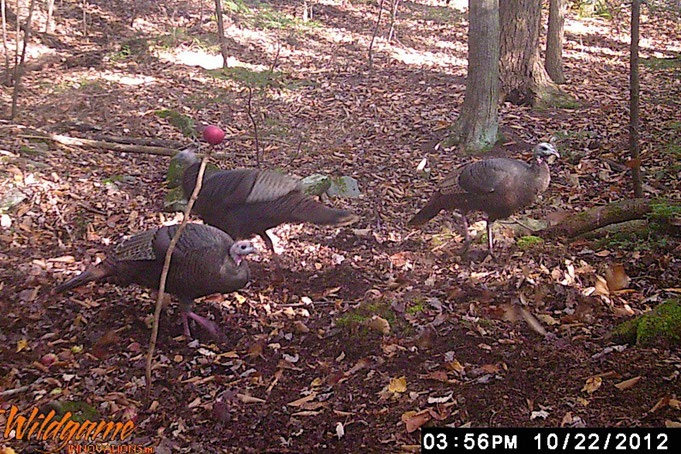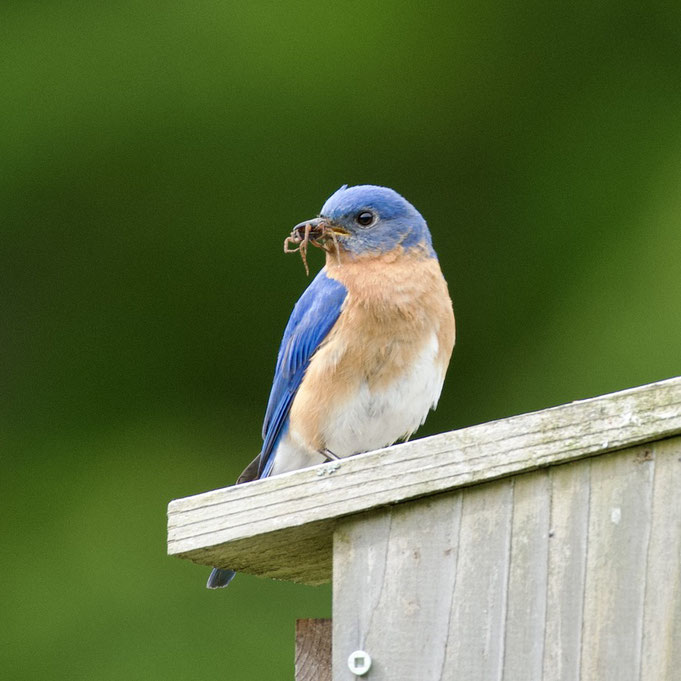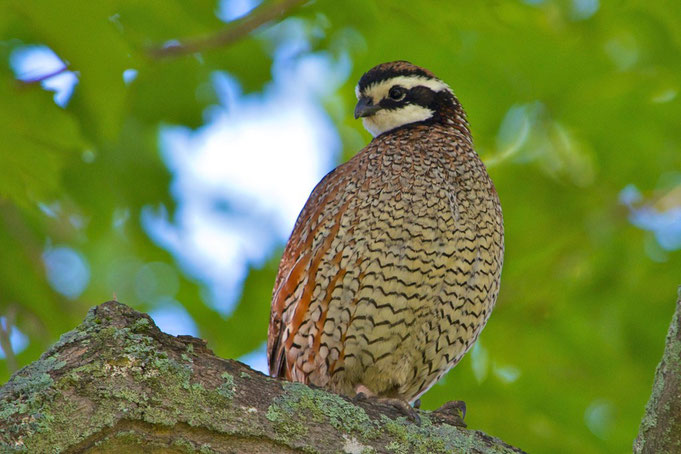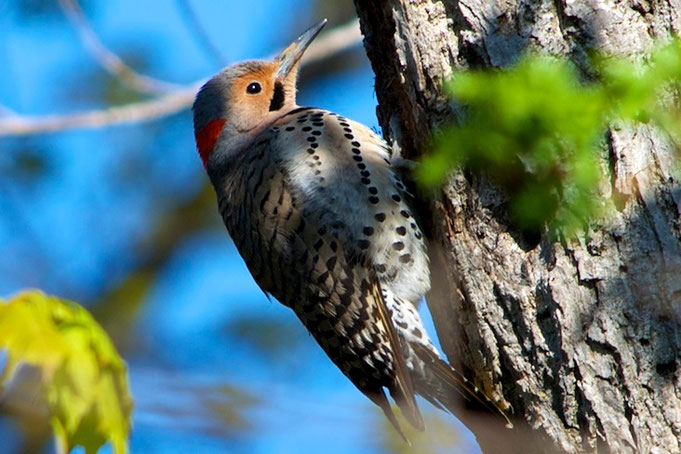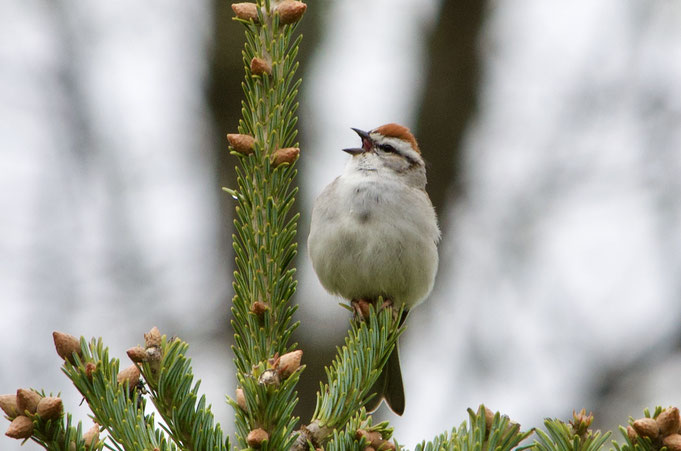birds
birds · March 10, 2014
It’s hard to predict where in the western and northeastern US Evening Grosbeaks (Coccothraustes vespertinus) will show up in any given winter to feed. Knowing that, we are lucky to have a small flock of Evening Grosbeaks visiting our bird-feeder this winter here in New Hampshire. These beautiful birds are fairly large and often travel in sizable flocks. Because of their size they prefer platform feeders to tube feeders. They eat sunflower seeds but are also attracted to the seeds, berries,...
birds · October 25, 2012
New Hampshire offers excellent opportunities for hunting wild turkey. This is possible today only because turkeys have made an amazing comeback in New Hampshire. By 1854, the birds had completely disappeared in the state because of habitat loss and market and subsistence hunting. Restoration efforts began in 1975, when Fish and Game released 25 wild turkeys in New Hampshire; careful management based on good science has allowed that initial introduction to grow to more than 40,000 birds today.
birds · August 03, 2012
To learn about the Nesting Box War go to an earlier blog 'Bluebird vs Tree Swallow'
birds · June 06, 2012
A male Northern Bobwhite (Colinus virginianus), in a maple tree on Distant Hill in Walpole, New Hampshire. The Northern Bobwhite is a resident throughout eastern North America, from southern Mexico and western Guatemala through the United States to extreme southern Canada. Southern New Hampshire is at the northern-most geographic range of this bird in New England. In Long Island, New York, students and teachers are helping biologist Eric Powers with an initiative named 'The Bobwhite Quail...
birds · May 23, 2012
This pair of Wood Ducks (Aix sponsa) visited the swimming pond at Distant Hill Gardens in the early morning. Because of the low light, I had to use a very high ISO "film" speed. This makes them look more like paintings than photos. Beautiful, none the less.
birds · May 12, 2012
North America has two easily distinguished races of Northern Flickers: the yellow-shafted form of the East, which occurs into Texas and the Great Plains, and the red-shafted form of the West. The key difference is the color of the flight-feather shafts, which are either a lemon yellow or a rosy red. Hybrids look intermediate and are common at the edges of these two groups’ ranges. The Yellow-shafted Flicker is one of the most rapidly disappearing birds in North America. Breeding Bird Surveys...
birds · May 05, 2012
Ruby-throated Hummingbirds have returned to Distant Hill Gardens. As part of their spring migration, some of these birds fly across the Gulf of Mexico, a 500 mile (800 km), non-stop flight over water. These tiny birds, the only hummingbird species to breed in eastern North America, don't just consume nectar but are omnivores, also feeding on insects and spiders. An adult ruby-throated hummingbird may eat twice its body weight in food each day, which it needs to sustain its high metabolism. Its...
birds · May 05, 2012
Chipping Sparrows love our Christmas tree plantation at Distant Hill Gardens. A number of the birds call the conifers home for the spring and summer months. We always find a few nests in the twenty or so trees we cut to give to friends each Holiday season. Chipping Sparrows seem to gravitate toward evergreens. The Cornell Lab of Ornithology's website allaboutbirds.org states that:"Chipping Sparrows... sing from the tops of small trees (often evergreens). When singing, they cling to high outer...
birds · April 29, 2012
Both Eastern Bluebirds and Tree Swallows visit us at Distant Hill every spring. We have six bird boxes for them to nest in, but there is a problem - they will compete for the same box. It turns out there is a way to alleviate the problem. Bluebirds will not let another pair of bluebirds nest within about 300 feet. Tree Swallows defend a range of only about 20 feet from other nesting Tree Swallows. However, both will allow other species of birds to nest within there defended range. The trick is...
birds · April 27, 2012
The Brown-headed Cowbird is one of my least favorite birds (on a par with the European Starling), but it is a very interesting bird nonetheless. It is North America’s most common “brood parasite.” A female cowbird makes no nest of her own, but instead lays her eggs in the nests of other bird species, which then raise the young cowbirds. Researchers believe that parasitism by cowbirds may be a significant factor contributing to the declining numbers of many songbirds in North America....
Distant Hill was listed as one of the Top 10 Places to Visit in New Hampshire!
Friends of Distant Hill (dba Distant Hill Gardens and Nature Trail) is a nonprofit,
tax-exempt organization under Section 501(c)(3) of the U.S. Internal Revenue Code.
Donations are tax-deductible as allowed by law. Tax ID# 84-3765898
or send a check via Snail Mail to:
Distant Hill Gardens and Nature Trail, 507 March Hill Road, Walpole, NH 03608


